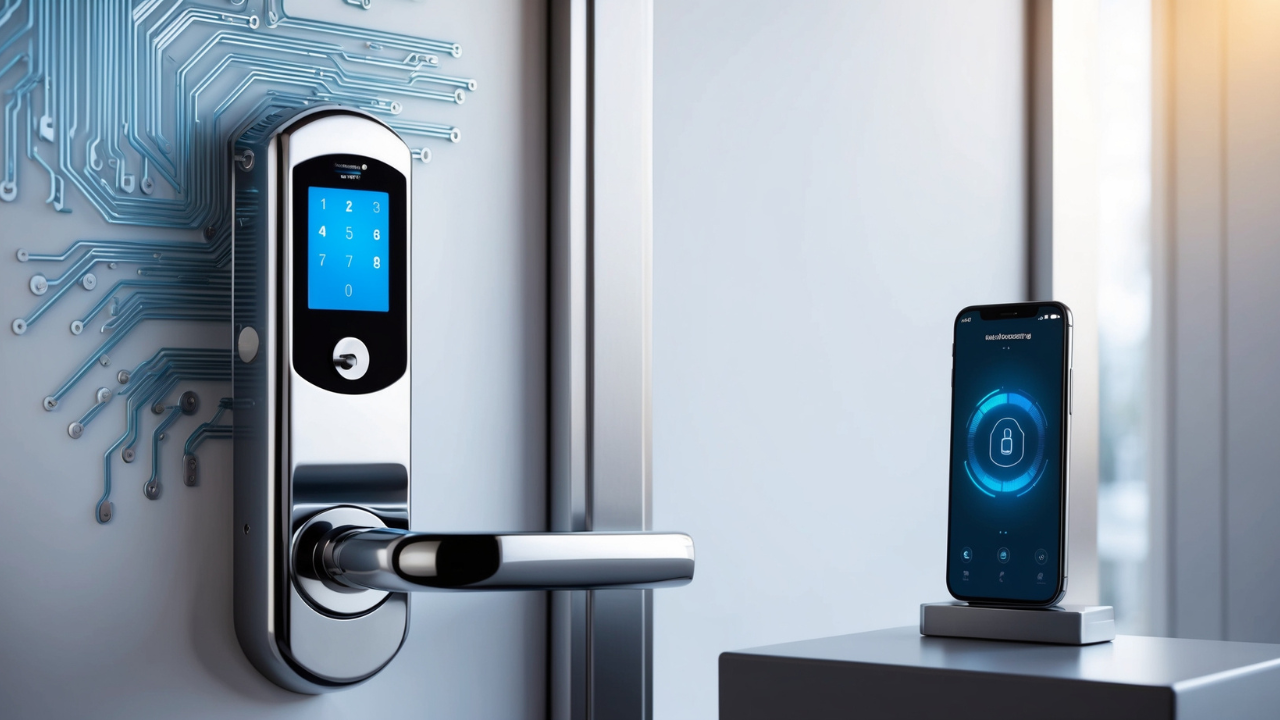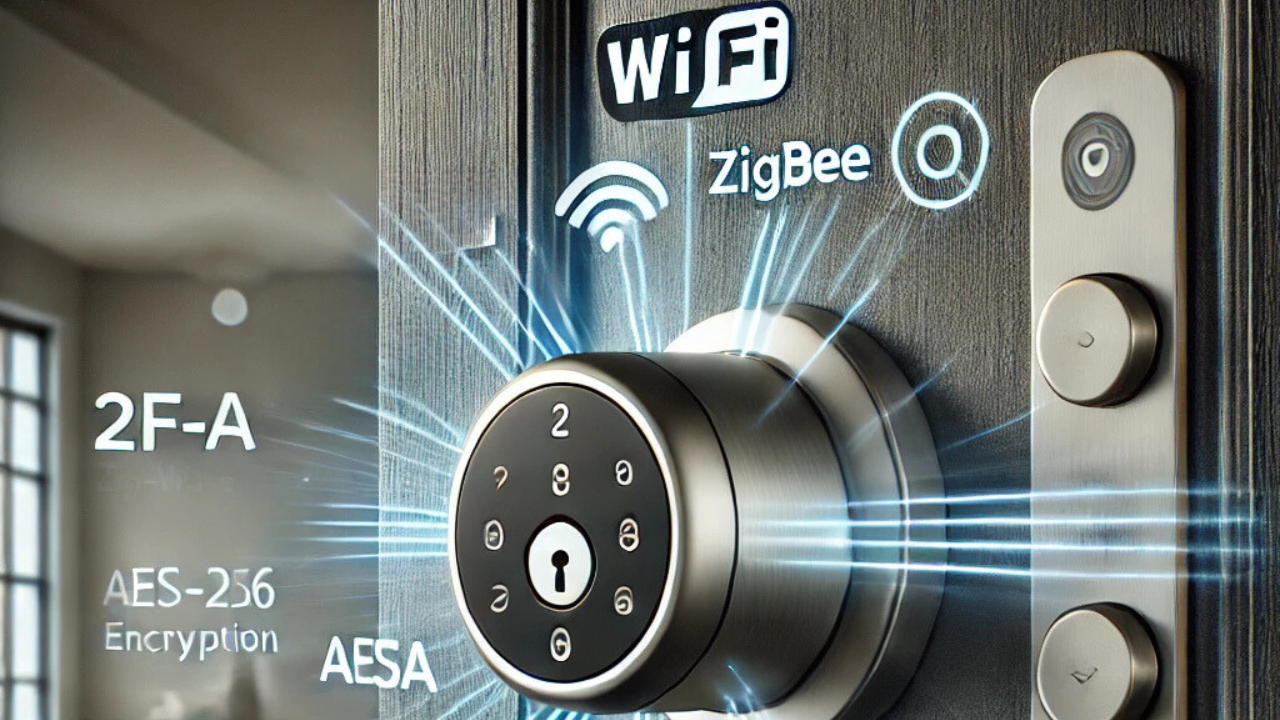Are Smart Home Locks Safe? Analyzing Security Features and Potential Vulnerabilities
Learn about the safety of smart home locks, their security features, and potential vulnerabilities. Stay informed on how to protect your home

Imagine coming home with your arms full of groceries, and your door unlocks automatically as you approach. No fumbling for keys, no hassle—just seamless access to your home. Smart home locks promise this kind of convenience, integrating cutting-edge technology into our everyday lives. While they offer convenience and added functionality, many people wonder if they’re as secure as traditional locks and can you really trust these digital guardians to protect your home?

How Secure are Smart Home Locks?
The first thing to understand about smart locks is that their security relies not only on their physical construction like traditional locks, but also on their wireless communication protocol, i.e. WiFi, Zigbee or Z-Wave. The good news is that many modern smart locks have invested in the latest encryption standards, such as AES-128 or AES-256, to keep them secure.
However, just like any internet-connected device, smart locks are vulnerable to certain types of cyberattacks. For instance, someone attempting a brute-force attack could try to guess your unlock codes, or a poorly secured Wi-Fi network could be a point of entry. That’s why pairing smart locks with a secure platform like Home Assistant, which allows you to control your network more effectively, is crucial. You can enable two-factor authentication (2FA) or use Z-Wave or Zigbee for a more isolated connection.
The Role of Physical Security
Even though we're talking about "smart" locks, physical security still plays a huge role. A lock's design and build quality are extremely important—features like a hardened steel deadbolt or anti-tampering mechanisms matter just as much as the software behind them. Brands like Schlage, Yale, and August offer high-grade smart locks that have passed rigorous security tests, giving you confidence that they aren’t easily bypassed by someone with a crowbar. More on this later.
Common Concerns About Smart Locks
Smart locks offer many conveniences, but there are valid concerns that might give homeowners pause. Let’s break down the most common worries and how to address them:
1. Vulnerability to Hacking
One of the biggest concerns with smart locks is the risk of hacking. Unlike traditional locks, smart locks connect to your home’s Wi-Fi, Bluetooth, Zigbee or Z-Wave networks, which opens up the possibility of digital attacks. Hackers could intercept signals, guess weak passwords, or exploit security loopholes in the software.
In fact, smart locks with poor encryption could be vulnerable to skilled hackers, especially when connected to unsecured networks. That said, top brands are fighting back with robust encryption standards like AES-128 and AES-256, the same protocols used by banking institutions to secure sensitive data.
How to Protect Against Hacking:
- Create unique, complex passwords for your smart lock app.
- Enable two-factor authentication (2FA) whenever possible.
- Using Z-Wave or Zigbee is generally considered more secure than WiFi.
- If using WiFi, secure your home network with at least with WPA3 encryption.
- Stick to reputable brands, and avoid low-cost models that might compromise on security or materials. (you get what you pay for)
2. Power and Connectivity Failures
Smart locks rely on battery power, and many require a stable internet connection for remote access. This raises concerns about what happens when the battery dies or your connection protocol of choice goes down. In either case, you could be locked out if you don't carry a physical key.
Fortunately, most well-designed smart locks offer fail-safes. Low-battery warnings give you time to replace the batteries before they run out. Many models include a physical key slot or allow for Bluetooth control, so you can still get in without Wi-Fi.
How to Avoid Power and Connectivity Problems:
- Regularly check your lock’s battery level and replace batteries as needed.
- Ensure your lock includes a backup entry option, like a physical key or keypad.
- Choose smart locks that support local control through Bluetooth, Z-Wave or Zigbee, allowing you to bypass the internet during outages.
3. Software Glitches and Compatibility Issues
Since smart locks are software-driven, they’re not immune to bugs or glitches. A faulty firmware update or compatibility issue with your smartphone could lock you out or limit functionality. In some cases, software malfunctions have left users unable to control their locks.
To counter this, reputable manufacturers frequently release firmware updates that fix bugs and improve performance. Pairing your smart lock with a platform like Home Assistant can help you maintain better control over these updates and resolve potential issues more easily.
How to Mitigate Software Issues:
- Keep your lock’s firmware up to date to prevent software vulnerabilities.
- Opt for smart locks that are compatible with platforms like Home Assistant, allowing you to automate firmware updates and manage issues locally.
4. Privacy Concerns
Smart locks track data such as when and how they’re used, raising questions about privacy. This information could reveal patterns of when you’re home or away, and if stored in the cloud, could be susceptible to data breaches or unauthorized access.
Using a local control platform like Home Assistant can mitigate this risk by keeping your data within your home network, rather than relying on cloud services. This gives you greater control over who has access to your lock data.
How to Protect Your Privacy:
- Choose smart locks that offer local control and data storage over cloud-based solutions.
- Review the privacy policies of your lock provider to understand how they manage your data.
5. Physical Security
While much of the focus is on digital vulnerabilities, the physical strength of a smart lock is just as important. Even the most advanced electronic security can be compromised if the lock’s physical components are weak. Cheaper models may be prone to forced entry, just like traditional low-quality locks.
To ensure robust physical security, look for smart locks with a high ANSI (American National Standards Institute) rating. ANSI Grade 1 locks are designed to withstand the highest levels of brute force attacks.
How to Maximize Physical Security:
- Choose locks with an ANSI Grade 1 or 2 rating, which ensures strong resistance to physical attacks.
- Ensure proper installation of the lock on a sturdy door and frame to prevent forced entry.
Enhancing Smart Lock Security with Home Assistant
One of the best ways to secure your smart lock is by integrating it with a platform like Home Assistant. Unlike other smart home hubs that rely on cloud-based services, Home Assistant allows for local control, meaning your data stays in your home, and you remain in charge of the lock’s security settings.
With Home Assistant, you can automate actions based on specific triggers—like automatically locking your doors when you arm your security system or receiving instant notifications if someone tampers with your lock. You can also integrate your lock with other devices like security cameras for added protection.
The Verdict: Are Smart Locks Safe?
Smart locks offer a level of convenience and control that traditional locks simply can’t match. With features like remote access, activity logs, and integration with smart home systems, they provide advanced security tools. However, they also introduce new vulnerabilities, such as hacking risks and potential technical failures.
That said, these risks can be effectively managed by following best practices:
- Use strong passwords and enable two-factor authentication.
- Keep your lock’s firmware updated.
- Choose reputable brands that prioritize security.
- Integrate your smart lock with Home Assistant for local control and advanced automation features.
In conclusion, smart locks are as safe as the user makes them. With the right setup and proper precautions, they can be a reliable and secure addition to any home.
Smart Lock Recommendations
Are you ready to upgrade to a smart lock? For integrating smart locks with Home Assistant, there are several great options depending on your preferences and the type of lock you want. Here are a few recommendations:
- August Smart Lock Pro + Connect: This lock integrates smoothly with Home Assistant through Z-Wave or Wi-Fi. It offers keyless entry, remote access, and auto-lock features, and can be paired with your existing deadbolt, making installation easy.
- Schlage BE469 Z-Wave Plus: Schlage is a popular choice for smart locks, and this model works well with Home Assistant using Z-Wave. It has a touch screen, built-in alarm technology, and can be managed remotely. It's known for its robust security features.
- Yale Assure Lock SL with Z-Wave: Another solid choice for Z-Wave-based integration, this lock works seamlessly with Home Assistant. It offers a sleek design, a touchscreen keypad, and supports multiple user codes. It also has a lock/unlock history feature.
- Ultraloq U-Bolt Pro (Z-Wave): This is a versatile lock with multiple ways to unlock—fingerprint, code, smartphone, or key. It integrates with Home Assistant via Z-Wave and provides remote access, auto-lock, and can be programmed with custom codes for guests.
- Aqara Smart Lock U300: This lock offers multiple unlocking options, including fingerprint, password, NFC card, and mechanical key. It integrates with Apple HomeKit via the Aqara Hub, with options for custom integrations with Home Assistant. The U300 features strong encryption, a C-grade lock cylinder, tamper alarms, and auto-lock, making it a secure and versatile smart lock for your home.
💡 Important Disclosure
This article contains affiliate links, which means I may earn a small commission if you click through and make a purchase—at no additional cost to you. These commissions help support the ongoing creation of helpful content like this. Rest assured, I only recommend products and services I personally use or genuinely believe can provide value to you.
Thanks for Your Support!
I truly appreciate you taking the time to read my article. If you found it helpful, please consider sharing it with your friends or fellow makers. Your support helps me continue creating content like this.
- Leave a Comment: Got questions or project ideas? Drop them below—I'd love to hear from you!
- Subscribe: For more tutorials, guides, and tips, subscribe to my YouTube channel and stay updated on all things tech!
- Shop & Support: If you're ready to get started, check out the recommended products in my articles using my affiliate links. It helps keep the lights on without costing you anything extra!
Thanks again for being part of this community, and happy building!
